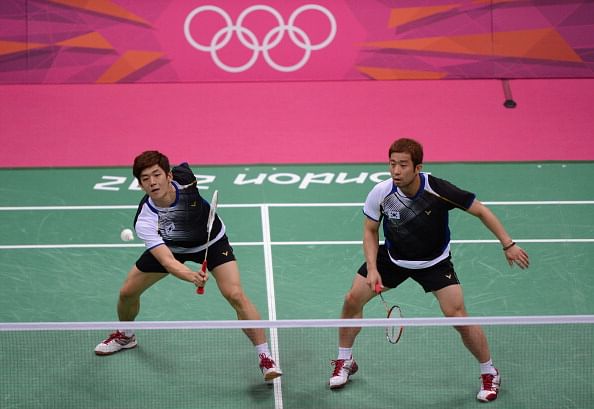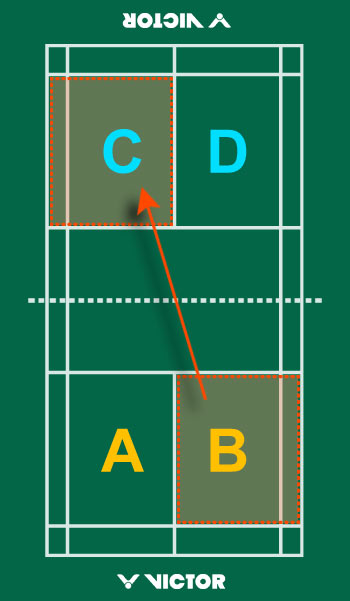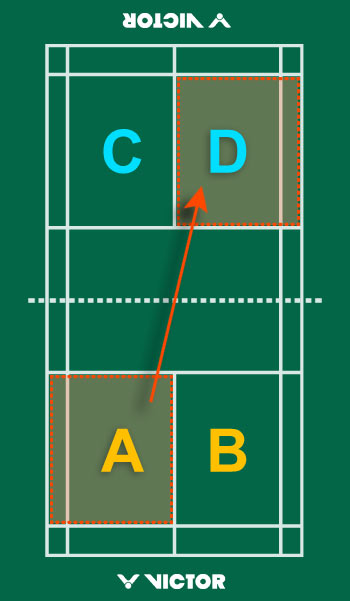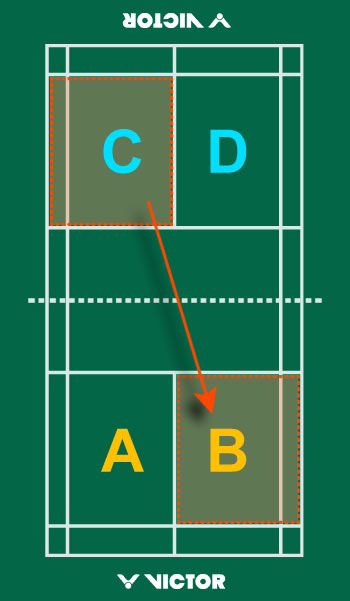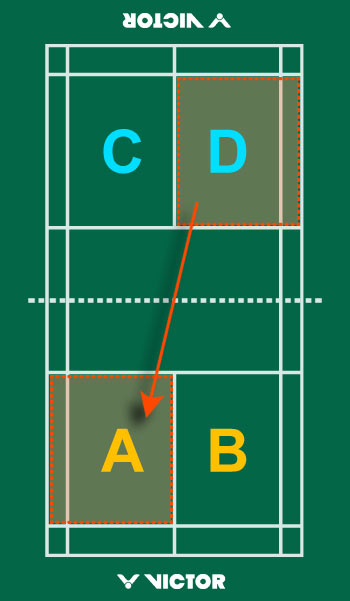【A】 ทีมชาติ / เยาวชนทีมชาติบางคนที่น่ากลัวมากๆ / อดีตทีมชาติมือต้นๆ

【B+】 นักกีฬาเขต / ตัวมหา'ลัย / มือแข่งขันรุ่นทั่วไป / พวกชอบล่ารางวัล หรืออดีตเคยถูกคัดตัวให้เข้าทีมชาติ ทีมเขต ทีมเยาวชน แต่ต้องผิดหวังเพราะเขารับได้จำนวนจำกัด พวกนี้มักจะเล่นเป็นตัวหลักๆในชมรม สมาคม สโมสร ทีม ก๊วนต่างๆ ซึ่งมักจะมีแต่คนกลัวไม่ค่อยกล้าจะตีด้วย คนพวกนี้จึงเหมือนมีกรรมต้องเล่นประจำอยู่ตามที่ต่างๆ (อยู่ในที่ชอบที่ชอบ) หรือบางคนก็จะเดินสาย ตะเวนไปเล่นตามที่ต่างๆที่มีมือดีๆอยู่ หรือไปเล่นกับชมรมที่ทีมชาติซ้อมกันอยู่
【B】 มือหนักหรือบางทีเค้าก็เรียกกันว่า มือแข็ง พบเห็นได้ทั่วๆไปตามสนามต่างๆถือว่าเป็นมือดี มือคอยรับแขก เป็นผู้เล่นขาประจำมีฝีมือในระดับต้นๆของชมรมใหญ่ๆ ทีม กลุ่ม ก๊วนต่างๆ เขาอาจเคยเป็นนักล่ารางวัลมาก่อน หรือกำลังฟิตเพื่อจะเป็นนักล่ารางวัลก็ได้ มักจะชอบลงแข่งในรุ่นจำกัดมือ(เพื่อเคี้ยวหมู) แต่ถ้าคิดจะไปเล่นในรุ่นทั่วไป ก้อจะต้องไปเป็นหมูให้เขาเคี้ยวอีกทีนึง
【C+】 ระดับนี้ส่วนใหญ่มักเป็นแบดมีครู น้อยคนมากที่เล่นอย่างเดียวแล้วฝีมือระดับนี้ ซึ่งเป็นระดับที่ไปเล่นที่ไหนทุกคนก็ต้อนรับ คือเล่นได้อย่างเหนียวแน่น ตายยาก มีประสบการณ์สูง เล่นมานานพอควร ตีเดี่ยวก็ได้ ตีคู่ก็ดี แต่อาจแก้เกมส์ยังไม่เก่ง เช่นอีกฝ่ายสวนลูกได้ดีมาก แต่ก็ยังดันทุรังตบกันต่อไป หรืออีกฝ่ายตบเก่งมาก รับแล้วสั้นลงเรื่อยๆ ก็ยังไม่เปลี่ยนวิธีเล่น

【C】 ระดับนี้มักเป็นมือรับแขกของชมรมส่วนใหญ่ และเป็นระดับการเล่นที่เป็นมาตราฐานสำหรับบุคคลทั่วๆไป ซึ่งเล่นเพื่อการออกกำลังกายเป็นหลัก ผู้ที่เล่นได้ในระดับนี้เราเรียกว่า ตีแบดได้ เล่นแบดเป็นแล้ว แต่อาจตีได้ไม่หนักหน่วงนัก หรือยังพอมีจุดอ่อนที่เห็นได้ชัด เช่น ตีแบ็คไม่ถึงหลัง / ตบเบาไป หรือ แรงน้อย ไม่ค่อยจะมีแรง พวกนี้จะเล่นแค่พอได้ออกกำลังเอาเหงื่อเป็นหลัก ต่อจากนี้ไปท่านจะต้องหมั่นพัฒนาฝีมือโดยการสั่งสมประสบการณ์ในการเล่นให้ บ่อยๆและมากๆ เพื่อให้การเล่น ตบ / วาง / เซฟ คมขึ้น
【P+】 ระดับนี้มักเป็นมือรับแขกของชมรมเล็กๆ ตีเป็นเกมส์ (เล่นเป็น) มีตบ / วาง / เซฟ (ดูชัดเจน..อ่อ นี่ตบ.. นั่นเซฟ..) หยอด / ดาด / พลิกแพลงจังหวะ ฯลฯ แต่ยังไม่นิ่งพอ ประมาณว่าถ้าจาเอาแต้มผมก็ตบก็บุกมา ไม่งั้นผมจะตบ(ติดเน็ต)ให้ดูเอง หรืออาจมีการเล่นที่มีจุดอ่อนอยู่ เช่นเซฟออกหลัง
【P】 ตีโต้ได้ เริ่มวิ่งในเกมส์ได้ เล่นคู่เริ่มยืนถูกตำแหน่ง (เข้าหน้า / คุมหลัง / แยกคอร์ท)ได้ เริ่มตีเป็นเกมส์ได้แล้ว(แต่ยังไม่โหด) พอที่จะมีจินตนาการการเล่นบ้างแล้วผู้เล่นในระดับนี้เราเรียกว่า เพิ่งเริ่มเล่นแบดเข้าสู่ระดับมาตราฐาน คือ ตีแบดได้ และเริ่มเล่นแบดในคอร์ทได้แล้ว
【P-】 ตีโดนลูก / โต้ไปโต้มา แกตีมาฉันตีไป แกตีมาฉันก็ตีกลับไป แกตีมาให้ฉันได้ฉันก็ตีกลับไปให้แกได้เหมือนกัน เอาสิ เอาสิ เอาแรงโต้กันเป็นหลัก สามารถนับแต้มในเกมส์ได้ แต่ขาดทักษะในการเล่น / ท่าทางการตียังไม่เข้าที่ ตีวืด / ตีเสียง่าย เล่นแบคแฮนด์ไม่ได้ วางลูกไม่เป็น ไม่มีจินตนาการในการเล่น ยังไม่รู้ว่าควรจะยืนหรือวิ่งไปทางไหนในเกมส์คู่ ฯลฯ ผู้เล่นในระดับนี้ ถือว่าเล่นแบดไม่ได้ระดับมาตราฐาน คือ ตีแบดได้ แต่ยังเล่นแบดไม่เป็น บางคนเขาก็เรียกว่าเป็นการตีเล่นในระดับชาวบ้าน



